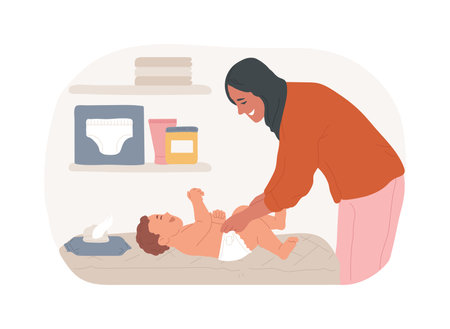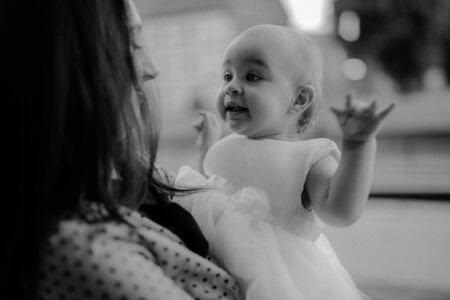Understanding Hearing and Speech Milestones in Newborns
Welcoming a newborn into your family is a joyful and tender journey, filled with countless little firsts. One of the most important areas to watch as your baby grows is their hearing and speech development. During the first year of life, infants rapidly progress through key milestones that lay the foundation for future communication. Typically, newborns begin responding to sounds from birth—startling at loud noises or turning toward familiar voices. By two to four months, you might notice your baby cooing, gurgling, or smiling when spoken to, showing early signs of recognizing and enjoying human voices. Around six months, many babies start babbling with different sounds, such as “ba-ba” or “da-da,” experimenting with pitch and volume. By their first birthday, most infants can respond to simple words like their name, understand basic instructions like “no,” and may even say one or two simple words themselves. These milestones reflect healthy auditory and language growth. Every child develops at their own pace, but being aware of these typical patterns helps parents celebrate progress and spot any potential concerns early on. Noticing these changes can feel magical—and reassuring—as you nurture your little one’s unique voice and listening skills.
2. Recognizing Early Signs of Communication
Every newborn begins their journey into language in remarkable and subtle ways. As loving parents, understanding how babies show they are hearing and starting to communicate can help us nurture their development with confidence and care.
How Babies Show They Are Hearing
In those first magical months, your baby’s reactions to sounds are among the earliest clues that their hearing is developing well. You might notice your little one:
| Sign | What It Looks Like |
|---|---|
| Startling at loud noises | Sudden arm or leg movements when a door slams or a dog barks |
| Calming to familiar voices | Soothed by a parent’s gentle words or lullabies |
| Turning toward sounds | Head or eyes moving in the direction of a rattle or music |
The First Steps in Communication
Your newborn’s early attempts at communication may be small, but they are full of meaning. Even before words, babies use sounds and expressions to connect with you:
- Cooing: Around 6-8 weeks, babies begin making soft, melodic vowel sounds (“ooohs” and “aaahs”) as they explore their voices.
- Crying: Crying is a primary way for newborns to communicate needs like hunger, discomfort, or fatigue.
- Facial Expressions: Smiles and widened eyes show interest or joy when you talk or sing to them.
The Power of Eye Contact
One of the most heartwarming milestones is when your baby locks eyes with you. This simple gesture is more than just adorable—it’s a key part of early communication. Making eye contact helps build trust and shows your child is learning how to interact with others. When your baby gazes into your eyes as you speak or sing, they’re not just seeing you—they’re connecting and learning about relationships.
Nurturing These Early Signs
By noticing these early signs—responding to sounds, cooing, and making eye contact—you can gently support your baby’s hearing and speech development. Remember, every child grows at their own pace. The most important thing is to keep talking, singing, and sharing loving moments together. These small acts lay the foundation for strong communication skills in the years ahead.

3. Supporting Your Newborn’s Listening Skills at Home
Nurturing your newborn’s hearing and early communication begins right in the heart of your home. Every loving word, gentle song, or soothing story helps your baby’s brain grow and builds the foundation for language. Here are some practical ways you can support your little one’s auditory development each day.
Talk to Your Baby Throughout the Day
Simple conversations—even about daily routines—can make a world of difference. Describe what you’re doing, name objects, and share your feelings out loud. For example, while changing a diaper, you might say, “Let’s get you all clean and cozy!” This constant stream of language helps your baby connect sounds with meaning and learn the rhythm of speech.
Sing Songs and Nursery Rhymes
Your voice is your baby’s favorite sound. Singing classic lullabies or playful nursery rhymes not only soothes but also exposes your newborn to different tones, pitches, and patterns. Don’t worry about being pitch-perfect; it’s the warmth and repetition that matter most. American favorites like “Twinkle, Twinkle, Little Star” or “The Wheels on the Bus” are wonderful choices.
Read Aloud Every Day
Even if your newborn can’t understand words yet, reading aloud is a bonding experience that introduces new sounds and vocabulary. Choose sturdy board books with bright pictures, read slowly, and use expressive voices. Point to pictures as you say the words, making storytime interactive and engaging from the very beginning.
Create a Calm Listening Environment
Minimize background noise from TVs or devices during playtime and cuddles so your baby can focus on your voice. Soft background music is fine in moderation—just make sure it doesn’t compete with your own talking or singing.
Respond with Love and Attention
When your baby coos or babbles, respond warmly with eye contact and gentle replies. These early “conversations,” even if just simple back-and-forth sounds, show your newborn that their attempts at communication matter—and encourage them to keep listening and learning.
By weaving these simple practices into everyday moments, you’ll be helping your child build strong listening skills while filling their world with comfort, security, and love.
4. Encouraging Speech Development Through Play and Interaction
Playtime isn’t just about fun—it’s a beautiful opportunity to nurture your newborn’s early language skills. By weaving interactive activities into your daily routine, you can gently support your baby’s speech and hearing development in ways that feel natural and joyful for both of you.
Engaging Activities to Boost Language Learning
Newborns thrive on connection, and the simplest moments of interaction lay the foundation for future communication. Here are some practical ways to encourage speech development through play:
| Activity | How It Helps | Tips for Parents |
|---|---|---|
| Face-to-Face Time | Babies learn to recognize facial expressions, mouth movements, and sounds. | Hold your baby close, make eye contact, and talk or sing softly. |
| Responding to Baby Sounds | Encourages turn-taking and teaches that their sounds have meaning. | Mimic their coos and gurgles; pause to let them “respond.” |
| Singing Songs & Nursery Rhymes | Repetition helps babies recognize patterns in language. | Choose simple songs with hand motions like “The Itsy Bitsy Spider.” |
| Reading Aloud | Introduces new words and sounds in a soothing way. | Use board books with bold images; read expressively, even if they can’t understand yet. |
| Tummy Time Chatting | Keeps babies engaged while strengthening muscles needed for speech. | Lie beside them during tummy time and describe what you see around you. |
The Power of Everyday Routines
Everyday routines are filled with chances to connect and communicate. Narrate your actions as you change diapers, prepare bottles, or take walks outside. Even the smallest interactions—like naming objects or describing the weather—help build your baby’s vocabulary and understanding of the world.
Create a Language-Rich Environment
You don’t need fancy toys or elaborate activities. Your loving voice, gentle touch, and warm presence are the most valuable tools for encouraging early communication. Trust that these small, consistent moments of engagement will help your baby feel safe, loved, and ready to discover their own voice.
5. When to Seek Professional Help
As you lovingly watch your newborn grow and begin to communicate, it’s important to remember that every child develops at their own pace. Still, being aware of key milestones can help you recognize if your baby might need extra support. While many variations are normal, certain signs may indicate a potential delay in hearing or speech development. If your baby does not startle at loud noises, doesn’t respond to familiar voices, or isn’t making cooing sounds by around three months old, these could be early signals worth noting. By six months, most babies turn their heads toward sounds and begin babbling with different sounds. If you notice your little one isn’t engaging in these ways, it’s a good idea to reach out for guidance.
Consulting your pediatrician is often the first step—they can check for any underlying medical concerns and offer reassurance about what’s typical. In some cases, your doctor may recommend an evaluation by a speech-language pathologist (SLP), a professional specially trained to assess and support children’s communication skills. Early intervention can make a meaningful difference, so trust your instincts as a parent. If something feels off or you have concerns about your baby’s hearing or speech progress, seeking help is never “overreacting”—it’s advocating for your child’s well-being. With the right support, every child has the opportunity to find their unique voice.
6. Resources for Families
Supporting your newborn’s hearing and speech development is a wonderful journey, and you don’t have to walk it alone. Many families find reassurance and guidance through helpful organizations, community programs, and reliable online sources dedicated to early communication. Here are some trusted resources to help you nurture your child’s early listening and speaking skills:
National Organizations
- American Speech-Language-Hearing Association (ASHA): Offers a wealth of information about communication milestones, finding certified professionals, and family-friendly resources. Visit asha.org
- Centers for Disease Control and Prevention (CDC) – Early Hearing Detection and Intervention: Features checklists, fact sheets, and guidance on developmental milestones. See cdc.gov/ncbddd/hearingloss
- The National Institute on Deafness and Other Communication Disorders (NIDCD): Provides scientific information about hearing, language development, and related research. Explore nidcd.nih.gov
Community Programs
- Early Intervention Programs (Part C of IDEA): Each state offers early intervention services for infants and toddlers with developmental delays or disabilities. Parents can learn more by contacting their local health department or visiting CDCs Early Intervention Contacts
- Parent Support Groups: Local hospitals, pediatric clinics, and libraries often host parent groups or playgroups focused on early communication skills where you can share experiences and advice.
Reliable Online Sources
- Zero to Three: Provides articles, videos, and tips for supporting language and social development in babies. Check out zerotothree.org
- Hands & Voices: A parent-driven organization supporting families of children who are deaf or hard of hearing with unbiased information. Visit handsandvoices.org
- Khan Academy Kids: Free educational app with engaging activities that encourage listening and speaking skills for young children. Find it at Khan Academy Kids
Finding the Right Support for Your Family
If you ever feel uncertain or concerned about your child’s hearing or speech development, reaching out to your pediatrician is always a gentle first step. These resources offer additional comfort, guidance, and connection—reminding you that you are not alone in nurturing your baby’s first words and sounds.


